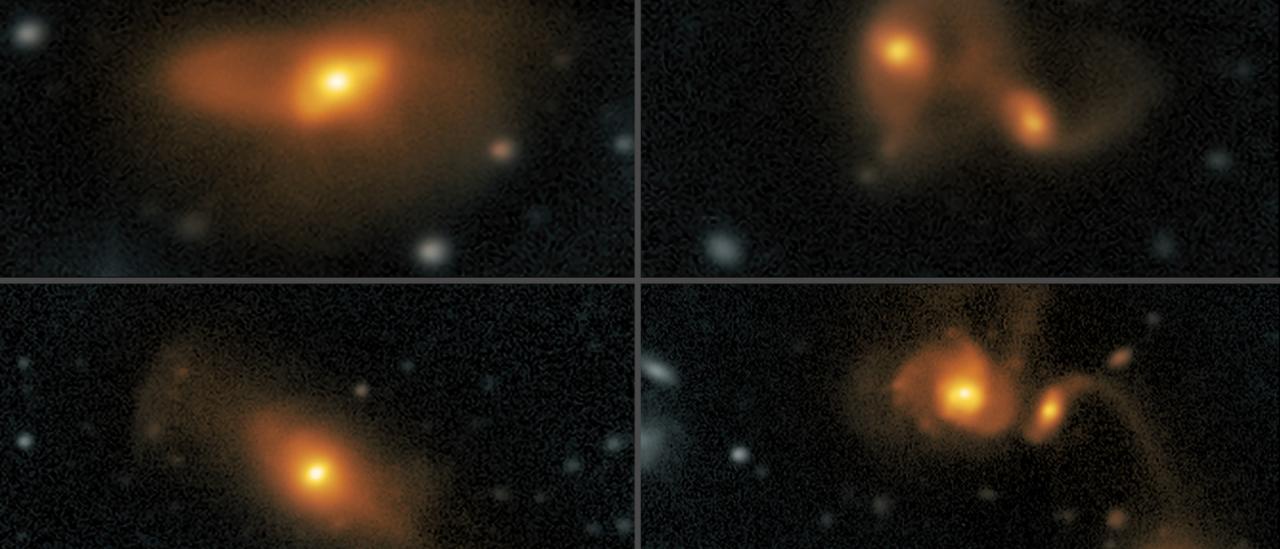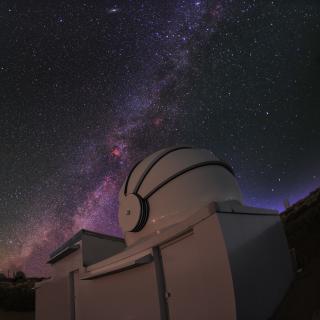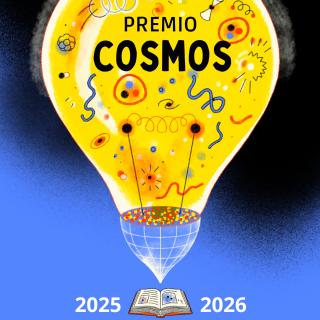An international scientific team, including the researchers from the Instituto de Astrofísica de Canarias (IAC) Cristina Ramos Almeida, Patricia Bessiere and Giovanna Speranza, has discovered that quasars, some of the brightest and most powerful objects in the Universe, are mainly ignited by mergers between galaxies. The finding sheds new light, after years of controversy, on what causes the emission of large amounts of energy in the most powerful active nuclei. The research has used observations from the Isaac Newton Telescope (INT) and the William Herschel Telescope (WHT) at the Roque de los Muchachos Observatory in La Palma. The study is published in the journal Monthly Notices of the Royal Astronomical Society.
First discovered 60 years ago, quasars can shine as brightly as a trillion stars packed into a volume the size of our Solar System. In the decades since they were first discovered, what could trigger such powerful activity has remained a mystery. New work led by scientists at the Universities of Sheffield and Hertfordshire (UK), together with researchers of the IAC has now revealed that they are the consequence of galaxies merging.
The high incidence of mergers in quasars was discovered when the research team, using the deep imaging capabilities of the Wide Field Camera (WFC) on the INT and the PF-QHY camera on the WHT, observed the presence of distorted, low surface brightness structures in the outer regions of the galaxies that are home to quasars.
Most galaxies have supermassive black holes at their centres. They also contain substantial amounts of gas, but most of the time this gas is orbiting at large distances from the galaxy centres, out of reach of the black holes. When two galaxies merge, gravitational forces drive the gas towards the black hole at the centre of the remnant galaxy system; just before the gas is consumed by the black hole, it releases extraordinary amounts of energy in the form of radiation, resulting in the characteristic quasar brilliance.
The ignition of a quasar can have dramatic consequences for its host galaxy - it can drive out the remaining gas which will prevent the formation of new stars for billions of years.
This is the first time that a sample of this size of obscured quasars has been observed with such a high level of sensitivity, thanks to the depth and quality of the images obtained at the Roque de Los Muchachos Observatory. By comparing observations of 48 quasars host galaxies with images of over 100 non-quasar galaxies, researchers concluded that quasar hosts are approximately three times as likely to be interacting or colliding with other galaxies. This means that mergers between galaxies are the main ignition mechanism for quasar-like activity.
The study has provided a significant step forward in our understanding of how these powerful objects are triggered and fuelled. Clive Tadhunter, a researcher at the University of Sheffield who co-led the study, says: "Quasars are one of the most extreme phenomena in the Universe, and what we see is likely to represent the future of the Milky Way when it collides with the Andromeda galaxy in about five billion years. It's exciting to observe these events and finally understand why they occur."
"Quasars are important to astrophysicists because, due to their brightness, they stand out at large distances and therefore act as beacons to the earliest epochs in the history of the Universe," explains Jonny Pierce, a postdoctoral research fellow at the University of Hertfordshire and first author of the paper.
"Finding out how quasars ignite is key to understanding the evolution of galaxies, as they have a very big impact on the gas and stars in the galaxies that host them," says Cristina Ramos Almeida, an IAC researcher who leads the international QSOFEED project in the framework of which this study has been carried out, and in which Patricia Bessiere and Giovanna Speranza, both IAC researchers and co-authors of the study, also participate. "This project aims to understand how the energy and winds produced by these quasars modify the properties of the central region of galaxies," she concludes.
Article: J. C. S. Pierce, C. Tadhunter, C. Ramos Almeida, P. Bessiere, J. V. Heaton, S. L. Ellison, G. Speranza, Y. Gordon, C. O'Dea, L. Grimmett and L. Makrygianni. "Galaxy interactions are the dominant trigger for local type 2 quasars", MNRAS, 2023, stad455. DOI: https://doi.org/10.1093/mnras/stad455
Contact at the IAC:
Cristina Ramos Almeida, cra [at] iac.es (cra[at]iac[dot]es)
Patricia Bessiere, patricia.bessiere [at] iac.es (patricia[dot]bessiere[at]iac[dot]es)
Giovanna Speranza, giovanna.speranza [at] iac.es (giovanna[dot]speranza[at]iac[dot]es)
![Young Stellar Population distribution The left panel shows the young stellar population (YSP) distribution overlaid with contours showing the advancing side (blue) and receding side (red) of the outflow. The right panel shows the same but with contours of W80 (i.e. the width of the 5007 [OIII] line).](/sites/default/files/styles/crop_square_2_2_to_320px/public/images/news/ysp-wcont_f.jpg?h=4336e403&itok=AnitfTe8)




